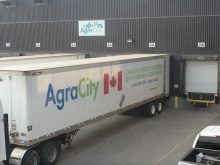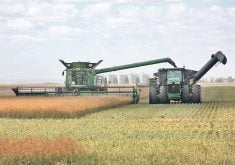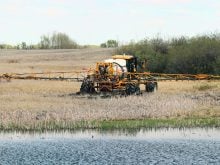Farmers continue to fight against companies’ efforts to make them pay for safety upgrades on farm railway crossings, though a previous deadline has been extended to 2024.
“It’s almost a case-by-case situation — there’s not a consistent outcry, but there’s definitely hotspots of concern,” said Mary Robinson, president of the Canadian Federation of Agriculture. “I think the concerns primarily are that long-standing maintenance agreements are being abandoned and farms in some instances are getting invoices for work done on their farm crossings.”
Producers and rural landowners with farm crossings on their property have received letters and contracts from railway companies, Jackie Kelly-Pemberton, director of the Ontario Federation of Agriculture, said in a statement June 27.
Read Also

Taking a look inside Canada’s seed regulatory overhaul
ive years, eight task teams, 130 volunteers and 135 recommendations later, Canada’s seed industry is still waiting for meaningful regulatory change.
Ottawa is seeking to improve safety by bringing grade levels and sightlines at crossings into compliance with federal standards, she said. However, landowners of farm crossings “have a statutory right to a crossing at the railway’s expense,” she added.
Kelly-Pemberton said such crossings can be the only way for producers to access fields on the opposite sides of tracks.
“Historically, these types of crossings that were used for farm purposes were designated as farm crossings and their maintenance had always been the responsibility of the railway,” she said.
“Now, that distinction is no longer being made. Instead, all farm crossings are being classified as private crossings, with the costs of upgrades and maintenance being downloaded to farmers and landowners.”
Despite attention being focused on the situation in 2020, the issue has largely been forgotten among Alberta producers due to subsequent crises, including the COVID-19 pandemic, Russia’s war with Ukraine and skyrocketing costs for inputs such as fuel, said Lynn Jacobson, president of the Alberta Federation of Agriculture.
“It’s one of those things that can catch you unawares and a lot of people aren’t aware,” he said June 29. “I even forgot about it really myself to a certain degree until you mentioned it.”
Prairie producers asked Ottawa in 2020 to extend the original deadline of Nov. 27, 2021, to comply with new federal regulations that came into effect in 2014. After months of lobbying by farmer organizations such as the AFA, along with the Agricultural Producers Association of Saskatchewan and Keystone Agricultural Producers of Manitoba, the federal government changed the deadline last year.
Regulations now provide for a one-year extension to November 2022 for about 2,000 existing public grade crossings. They present a higher risk based on factors such as track speed and traffic volume, said senior communications adviser Sau Sau Liu of Transport Canada in a statement June 29.
However, about 17,500 remaining public and all private grade crossings received a three-year extension to November 2024, she said. It was estimated last year that about 85 percent of the public and 78 percent of the private crossings were not yet compliant with federal regulations, she added.
“The vast majority of private crossings require only minor upgrades, which may include brush cutting or installation of signage requirements,” said Liu. However, Jacobson said he had heard of some prairie farmers facing bills ranging from $5,000 to $20,000.
Robinson said crossings in Saskatchewan are being dealt with on a case-by-case basis involving the private negotiations of individual farmers with railway companies. “And when you consider the many nuances of each situation, this seems to be a pretty good outcome, and we know in other situations railways have carried out the work themselves without putting the work even to tender, and then they’ve sent an invoice to the farmer.”
However, some farmers in Ontario have been asked to not only pay for upgrades and maintenance, but also to pay for everything from signage to liability insurance at a time when they are facing skyrocketing input costs, said Robinson.
“So, I think ideally people are saying the maintenance of the railway crossing should continue as per the historical agreement,” she said.
“For people from the farm community, safety is obviously a huge priority for all of us, but the concern around cost is a huge factor for a lot of people. And it just seems crazy to me that a farmer would need to pay to maintain a crossing they need to use to access their own land, but there are so many different situations that it is not easy to have a broad-stroke approach to dealing with this whole issue.”
Although KAP welcomes measures to improve the safety at railway crossings across Canada, “unfortunately, not all farmers will benefit from these changes,” said president Bill Campbell in a statement June 28.
“It is important that these crucial access points are maintained and receive the required upgrades without imposing additional costs onto agricultural producers. As we have noted in the past, KAP believes the maintenance and repairs to grade crossing are the financial responsibility of Class 1 railways and not farmers.”
Producers who dispute such costs should contact the Canadian Transportation Agency, he said. “The CTA is responsible for all disputes relating to federally regulated railways.”
















